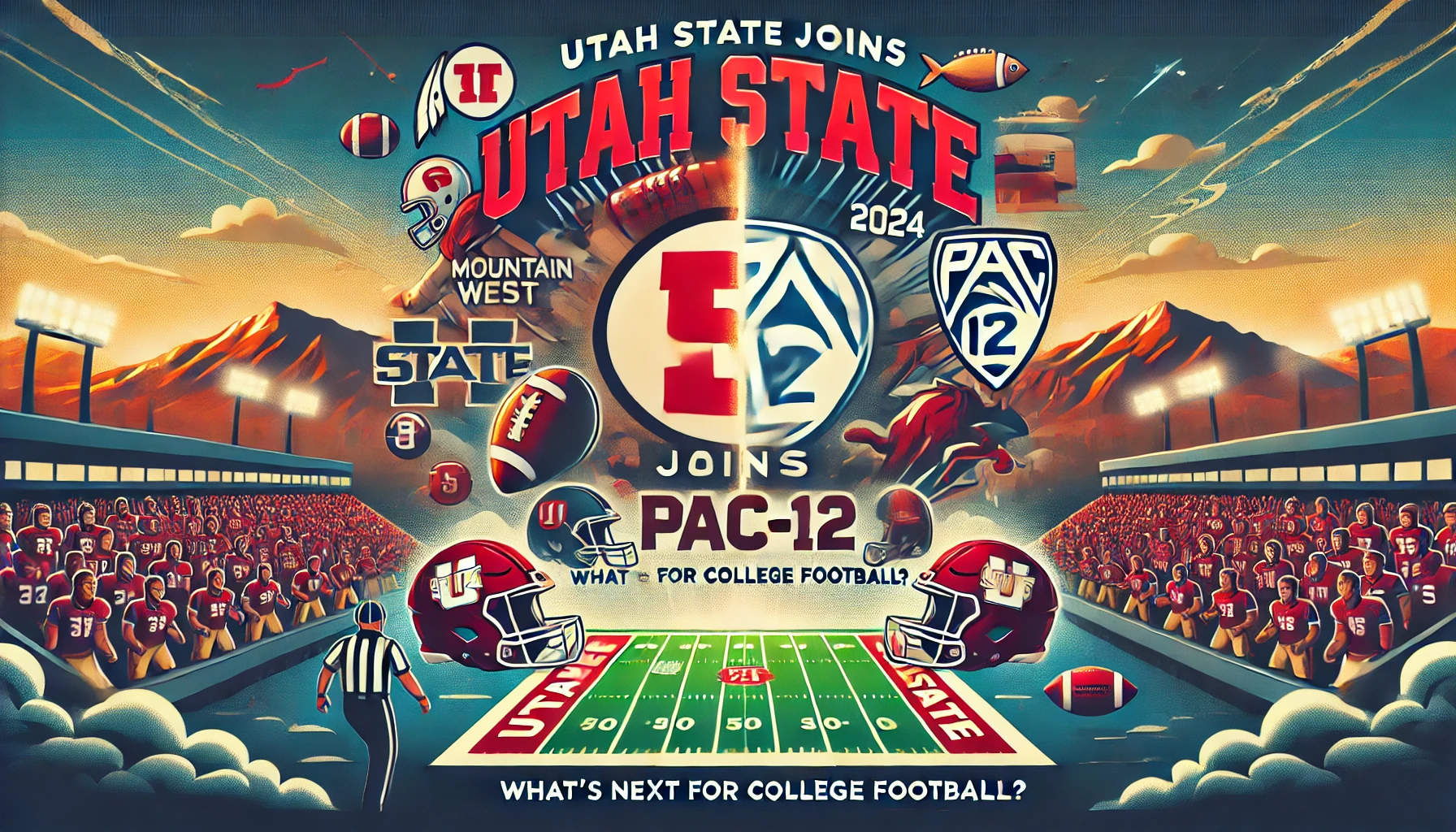Utah State Joins Pac-12: What It Means for the Mountain West and College Football’s Future
In a significant move that could further reshape the college sports landscape, Utah State recently announced its decision to join the Pac-12, becoming the fifth Mountain West school to make the switch. With Utah State’s addition, the Pac-12 expansion 2024 is gaining momentum, signaling a major shift in conference alignments. This move has not only intensified the ongoing Pac-12 realignment but also raised questions about the future of the Mountain West and its remaining member schools.
In this blog, we’ll explore the implications of Utah State’s Pac-12 membership, how it fits into the broader trend of Mountain West schools to Pac-12, and the legal and competitive consequences that come with these changes. We’ll also take a look at the next potential moves for both the Pac-12 and Mountain West conferences.
The Pac-12 Expansion 2024: A New Era for College Football
The Pac-12 expansion 2024 has become one of the most talked-about events in college sports. Once considered a powerhouse of west coast football, the Pac-12 saw ten of its core members leave for other conferences in 2023 due to financial considerations, exposure, and stability. Schools like USC and UCLA were among the first to defect, and other members soon followed, leaving the conference with just two remaining members: Washington State and Oregon State(AOL.com)(AOL.com).
The addition of Utah State to the Pac-12, along with other Mountain West schools like Boise State, Fresno State, Colorado State, and San Diego State, marks a revival of the conference as it seeks to maintain relevance in the Football Bowl Subdivision (FBS). The Pac-12 must have a minimum of eight teams to be recognized as a legitimate FBS conference, and with seven members currently on board, the race to recruit an eighth team is in full swing(AOL.com).
Utah State’s Move from the Mountain West to Pac-12
For Utah State, joining the Pac-12 represents a major upgrade in terms of exposure and competition. The Mountain West schools have long been regarded as mid-major programs, often overshadowed by the Power Five conferences like the SEC, Big Ten, and the Pac-12 in its former glory. However, as the Pac-12 rebuilds, these new members have a chance to elevate their profile by competing in a more prestigious conference.
Utah State, known for its strong football program, has had a long-standing rivalry with other Mountain West schools, but moving to the Pac-12 gives them access to better TV deals, higher-profile matchups, and greater recruiting power. The move could also help them secure a more lucrative path to bowl games and potential playoff contention(AOL.com)(AOL.com).
From a financial standpoint, the move is beneficial for Utah State. The Pac-12’s new media deal is expected to bring in more revenue for its members than the Mountain West’s existing agreements, allowing Utah State to invest more in its athletic programs. With a stronger financial base, Utah State can attract better talent and improve its facilities, making the move a win-win for the Aggies.
Mountain West’s Response: Realignment and Expansion
While the Pac-12 expansion is exciting for Utah State, it presents a challenging situation for the Mountain West. The conference has now lost five of its top programs to the Pac-12, leaving it with just seven remaining schools. The Mountain West will likely need to expand if it wants to remain competitive and continue as an FBS conference.
One possible scenario is a merger between the Mountain West and the American Athletic Conference (AAC). While the AAC recently reaffirmed its commitment to retaining schools like Memphis, South Florida, and Tulane, a future collaboration between the two conferences could be on the table(AOL.com). Such a move would help both conferences fill gaps in their memberships and preserve their place in college football.
The legal battle between the Pac-12 vs Mountain West also complicates things. The Mountain West is seeking compensation for the schools it has lost to the Pac-12, citing withdrawal fees as outlined in their existing agreements. If the Pac-12 is forced to pay millions in penalties, it could slow down their ability to expand further(AOL.com).
Legal and Financial Implications of the Pac-12 vs Mountain West Merger
The legal skirmishes between the Pac-12 and Mountain West are an important backdrop to the realignment drama. The Mountain West claims that the Pac-12 owes it millions in exit fees for poaching its schools, including Utah State. According to the Mountain West’s bylaws, any school that departs for another conference must pay a significant withdrawal fee. With five teams already on their way out, the combined penalty could reach as high as $67.5 million(AOL.com)(AOL.com).
This has led some to speculate that a Pac-12 vs Mountain West merger might be the only viable solution to avoid a lengthy legal battle. By merging, both conferences could resolve their disputes while ensuring that they meet the NCAA’s eight-team requirement for FBS status. A merged conference could also offer a more stable future for the schools involved, allowing them to compete on a national stage without the threat of further poaching from Power Five conferences.
However, a merger raises other questions: Will the combined conference be able to secure lucrative media deals? Will it be competitive enough to attract top recruits and maintain national relevance in college football? These are crucial issues that both conferences must address if they are to survive in an increasingly competitive environment(AOL.com).
What’s Next for Utah State and the Pac-12?
For Utah State, the move to the Pac-12 signals a new era of opportunity. The Aggies are set to compete in a stronger conference, with more exposure and financial resources at their disposal. However, the competition will be fierce. As one of the newer members, Utah State will need to quickly adapt to the level of play in the Pac-12 and establish itself as a force to be reckoned with.
Meanwhile, the Pac-12 expansion is far from complete. The conference still needs at least one more team to meet the NCAA’s requirements for FBS status, and it’s unclear who that will be. UNLV and Air Force have both been mentioned as potential candidates, though both schools have made moves suggesting they may stay in the Mountain West(AOL.com).
As the dust settles, one thing is clear: the face of college football is changing, and Utah State’s Pac-12 membership is just one piece of a much larger puzzle. The Pac-12 realignment is still in flux, and it will be fascinating to see which schools join next and how the Mountain West responds to losing so many key members.
A New Landscape for College Football
The decision for Utah State to join the Pac-12 is a bold move that reflects the shifting dynamics of college football. With more schools considering realignment, the Pac-12 expansion 2024 is poised to have a lasting impact on the landscape of the sport. Utah State, along with other Mountain West schools, will benefit from increased exposure, financial gains, and higher levels of competition, but the challenges ahead are significant.
As legal battles over exit fees and media deals continue, both the Pac-12 and Mountain West face uncertain futures. A possible merger could resolve some of these issues, but it remains to be seen how these conferences will navigate the increasingly competitive world of college athletics.
For more insights into the evolution of sports and educational resources on leadership and strategy, visit Regent Studies. Stay tuned as we continue to follow the developments in the Pac-12 realignment and the future of college football.




